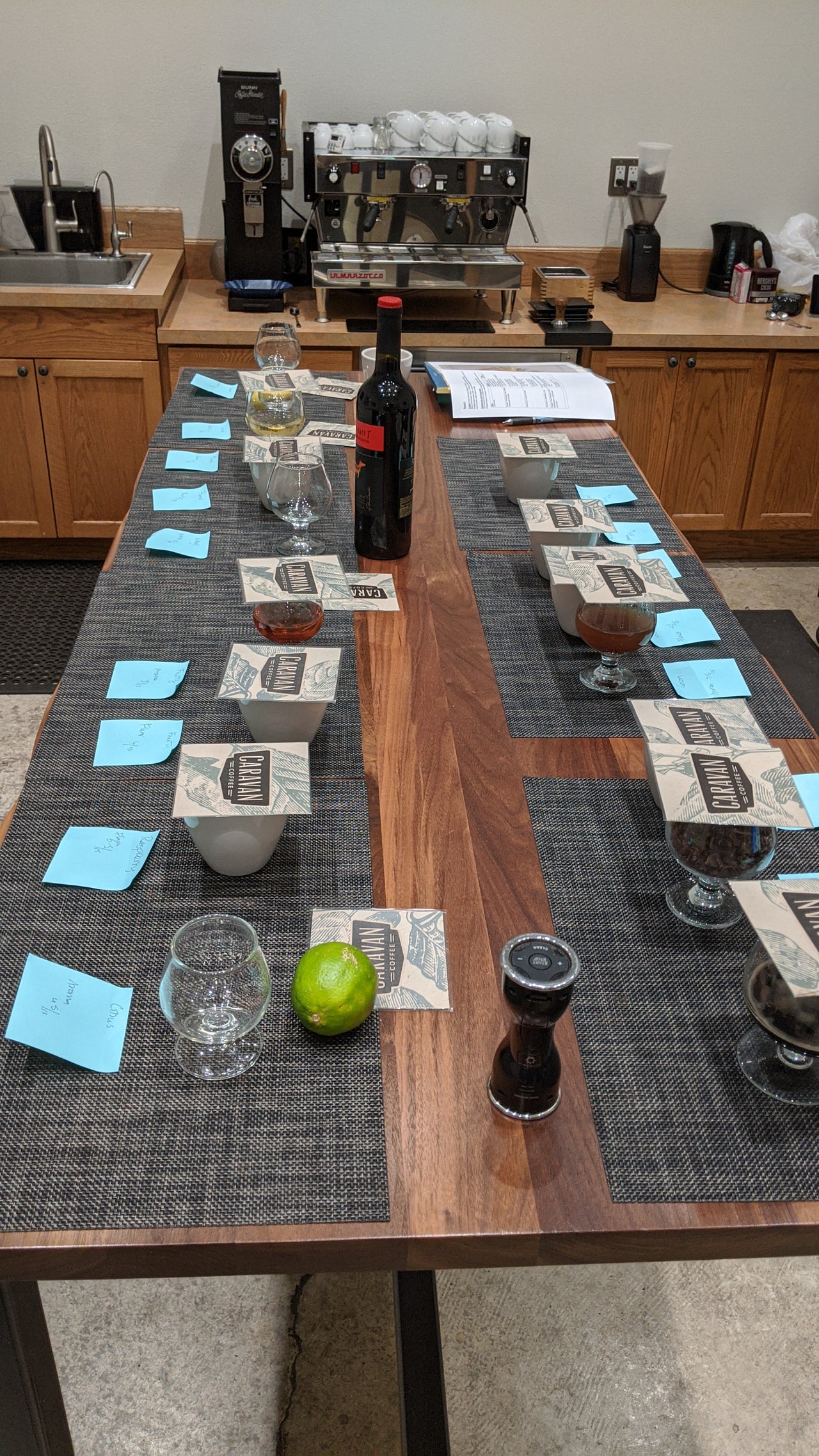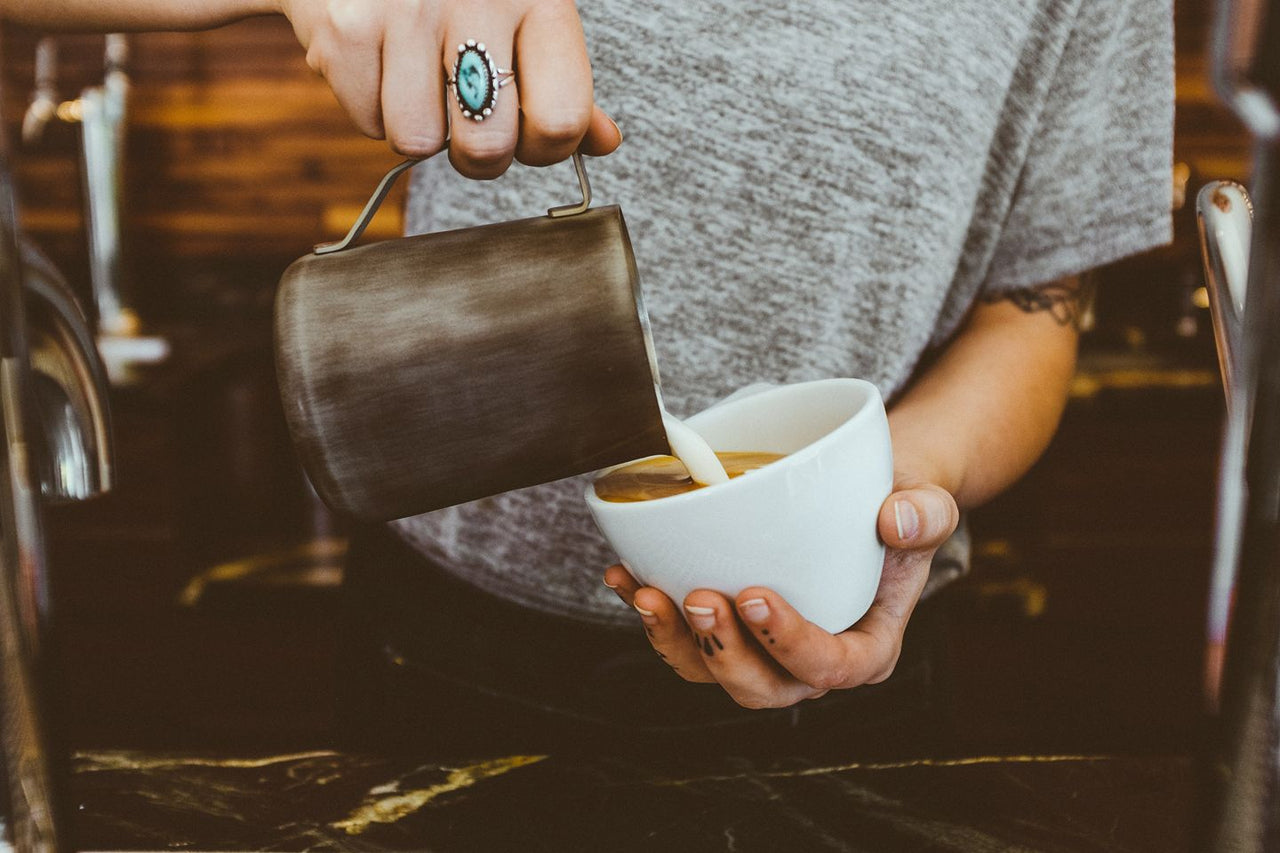artisan, Coffee, coffee cupping, Cupping, Education
Sensory Calibration - Part 1, where do coffee tasting notes come from?
July 08, 2020 | Adam Carpenter
artisan, Coffee, coffee cupping, Cupping, Education
July 08, 2020 | Adam Carpenter

Have you noticed the three words on our coffee bags? Capstone for instance, “Vibrant Citrus, Milk Chocolate, and Sweet” Were those just plucked out of thin air or rather do they intentionally and accurately describe the bag’s contents. This naming process starts with what we call sensory calibration. Let me explain.
It’s so helpful to all speak the same language. When I say “fruity”, are we both going to think and look for something aspiring to juicy 100% kiwi strawberry. Why can we do this? Because we have taken the time (and Q-Grading courses) to talk and taste beforehand. We have already agreed to what “fruity” means, especially when it comes to coffee.
So I tasted some Kenya Ruthaka on Friday and communicated with 20 others until we were on the same page called "Fruity". If enough of this talking is shared we can start to be calibrated, to have a known standard. When I say this coffee has a fruity aroma and taste, you will be thinking the same thing, even before I say it. Great!
To do this we all start with the same coffee, the same items from the grocery store, and set a time to meet. We all brew our Kenya Ruthaka (the same way) smelling its fragrance and tasting its flavor. Using the World Coffee Research lexicon we calibrate.
Did I smell the fruit fragrance? Did it have some Kiwi Strawberry attributes? How strong? According to the lexicon, it will have an intensity of 3, that’s somewhere between barely detectable to identifiable, but not very intense. We talked this through. We looked at the definition, “a sweet, floral, aromatic blend of a variety of ripe fruits”, did this match? Because a number of professionals had already done the hard laborious work to bring about the lexicon, all I needed to do was smell and taste.
The good news, the professional’s work was good and accurate. Sometimes the brew of coffee in front of me didn’t at first have this attribute but that was not because it was not there. I just could not recognize it or I was calling the same thing by a different name. So we talked, re-tasted, and began to recognize and confirm “fruity”. It went on to include, when it had cooled, Jell-O raspberry and lemon and lime notes.
This is part of the method we use to select the three descriptive notes on a Caravan Coffee packet of coffee. Read them and check them out or add more of your own. Let us know what you come up with.
Written by Paul Allen, our Lead QC and Green Coffee Buyer.
